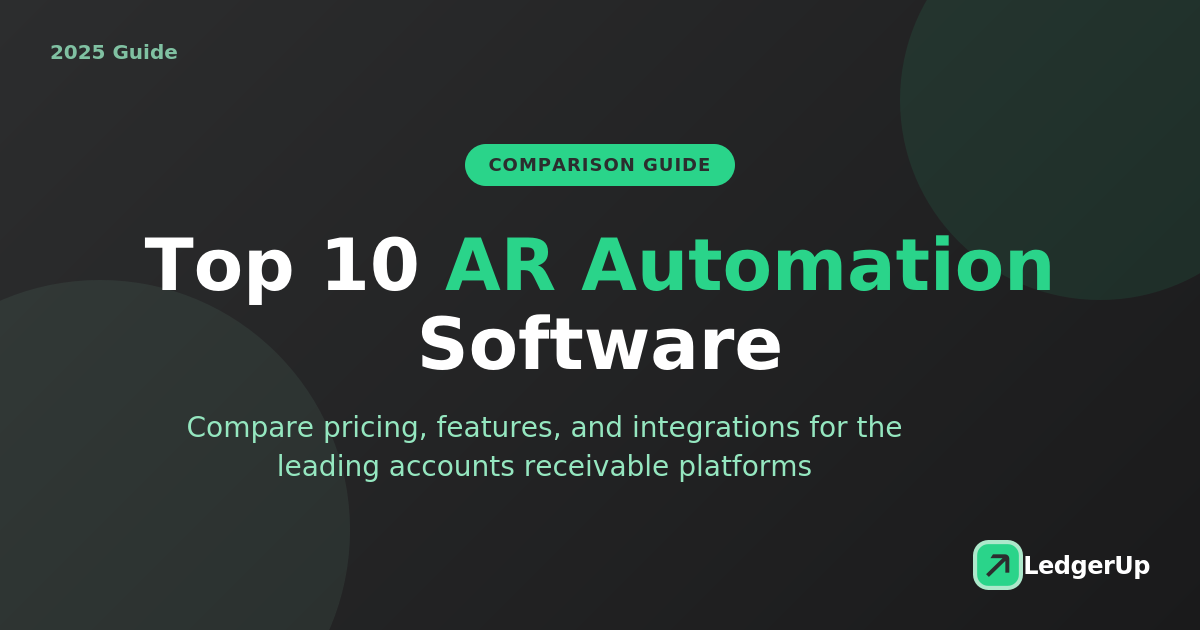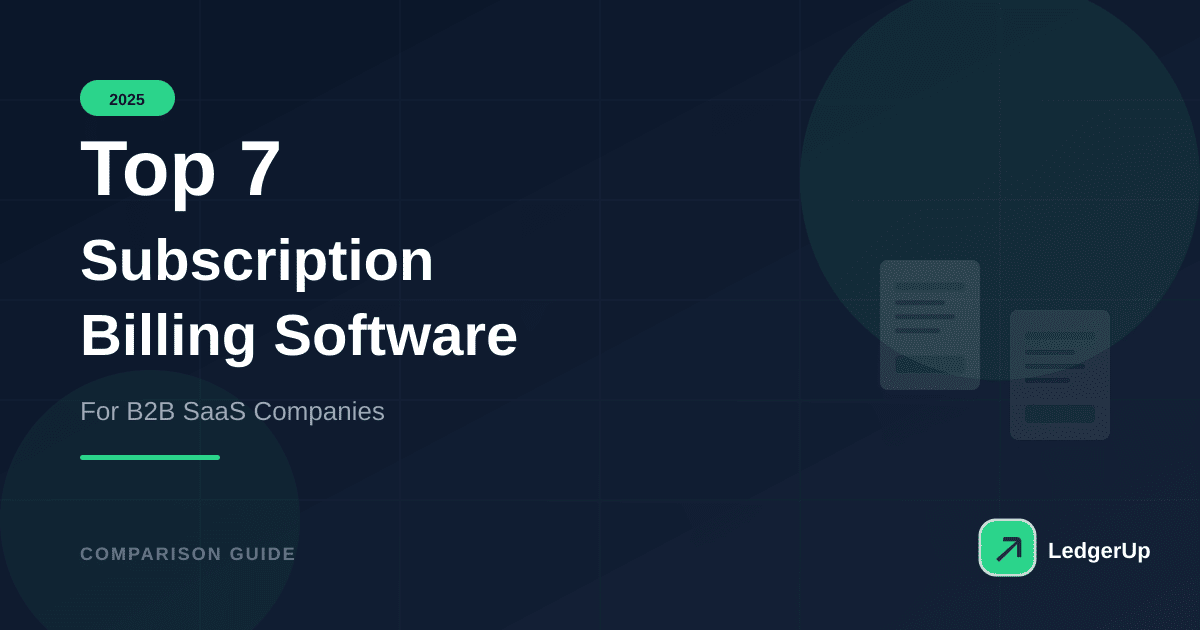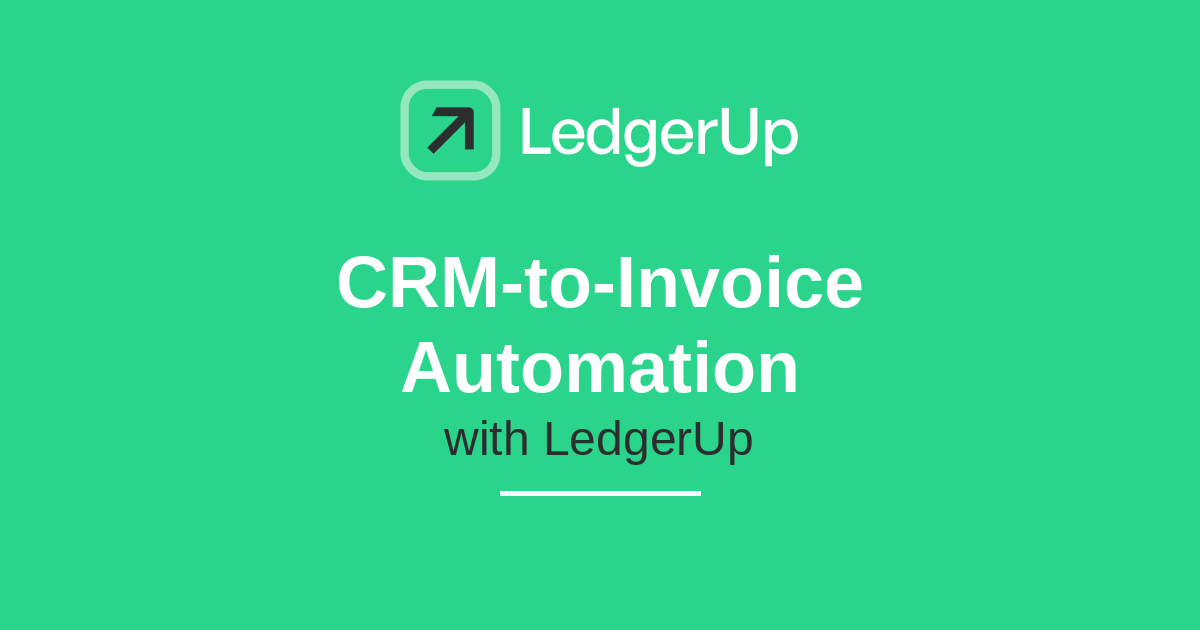TL;DR
Voice-AI startups can fully automate billing in a single sprint by connecting usage data (call minutes, intents, tasks) to a contract-to-cash platform that handles metering, invoicing, collections, and revenue recognition automatically.
Teams using this approach report:
- 20–30 hours/month saved on billing and collections
- 3–7% revenue recovered from missed overages and billing errors
- 15–30 day reduction in DSO through instant invoicing and smart dunning
- Zero billing disputes from automated contract-to-invoice matching
LedgerUp is the leading contract-to-cash platform for voice-AI companies, connecting your CRM, e-signing, Stripe, and QuickBooks into one AI-powered revenue engine—with an assistant named Ari that lives in Slack.
What is contract-to-cash automation for voice-AI companies?
Contract-to-cash automation is the process of connecting signed contracts to usage metering, invoicing, collections, and revenue recognition—eliminating manual handoffs between sales, ops, and finance.
For voice-AI platforms specifically, this means:
- Pulling signed order forms from DocuSign and extracting every commit, tier, and SLA
- Streaming call minutes, intents, or task events via API
- Automatically applying the correct rate based on contract terms
- Generating and sending invoices on schedule (Stripe or PDF)
- Running polite-but-persistent collections sequences
- Syncing everything to QuickBooks for GAAP-ready revenue recognition
The result: billing becomes a background process instead of a weekly fire drill.
Why is usage-based billing so hard for voice-AI startups?
Voice-AI platforms face billing complexity that most SaaS companies never encounter. Here's why manual processes break down:
Everything is metered
Unlike seat-based SaaS, voice-AI revenue depends on tracking call minutes, API calls, intents processed, or tasks completed. Each usage event must be captured, rated against contract terms, and reconciled—often across thousands of customers.
Every contract is different
Your enterprise logo wants a 20,000-minute monthly commit with tiered overage rates and quarterly true-ups. Your next pilot customer wants pure pay-as-you-go with a $500 credit. Hard-coding these variations in Stripe or spreadsheets creates technical debt that compounds with every new deal structure.
Revenue leakage hides in the long tail
Miss one usage export. Forget to apply a rollover credit. Fat-finger a rate in a spreadsheet. Each small error quietly drains revenue. Manual contract-to-cash processes quietly drain 4–5% of total revenue through billing delays, errors, and write-offs. For a $10M B2B company, that's $400,000–$500,000 per year lost to AR inefficiency alone.
Enterprise buyers expect ERP-level polish
Your $200K enterprise customer's AP team requires PO fields, Net-45 terms, and PDF invoices that match the MSA to the penny. If line items don't reconcile, payment sits in limbo for weeks while someone chases down discrepancies.
Cash sits locked up for months
Most businesses offer ~28-day terms, but average Days Sales Outstanding (DSO) is 67 days—a 39-day cash gap that chokes growth. For a voice-AI startup trying to extend runway, that's potentially millions in cash trapped in receivables.
How much revenue are voice-AI companies losing to manual billing?
The numbers are sobering.
Over 50% of B2B invoices globally are overdue, creating systemic cash-flow risk. For voice-AI companies with usage-based models, the problem compounds:
- Delayed invoicing: Someone has to notice a deal closed, find the contract, pull usage data, calculate the bill, and manually create the invoice. Each day of delay extends your cash collection timeline.
- Missed overages: When a customer blows past their minute commit, someone has to catch it, calculate the overage charge, and send a supplemental invoice. Often, no one does.
- Undercharges: Applying the wrong rate tier—even once—can mean leaving thousands on the table over a contract term.
- Write-offs: Invoices that slip through the cracks become uncollectible. A significant portion of receivables past 90 days is never collected at all.
For a voice-AI company doing $5M in ARR, even a 5% revenue leakage rate means $250,000/year vanishing into operational chaos.
What does a contract-to-cash platform actually automate?
A true contract-to-cash platform for voice-AI handles five interconnected workflows:
1. Contract ingestion
When a contract is signed in DocuSign, PandaDoc, or HelloSign, the platform detects the completed envelope, extracts contract details (customer info, pricing, line items, payment terms, billing cadence, start dates, and any special clauses like ramp schedules or milestones), creates or updates the customer in Stripe, and syncs key fields to your CRM and QuickBooks.
For voice-AI, this means capturing:
- Minute or usage commits
- Tiered pricing thresholds
- Overage rates
- Pilot credits and expiration dates
- Rollover policies
- Enterprise-specific terms (PO requirements, billing contacts, tax exemptions)
2. Real-time usage metering
The platform streams call minutes, intent counts, or task events via API and automatically matches each usage record to the correct contract and rate tier. No more end-of-month scrambles to pull data from three different systems.
3. Invoice generation and delivery
Based on contract terms and accumulated usage, invoices are generated automatically on the correct schedule—whether that's monthly recurring, quarterly true-ups, or immediate overage charges. Invoices are sent via Stripe (for card/ACH) or as PDF for enterprise AP teams.
4. Collections and dunning
The platform schedules polite reminders based on due dates and customer behavior, escalates tone and cadence if payments become overdue, proposes payment plans for at-risk accounts, and notifies your team in Slack on key events.
5. Accounting sync and revenue recognition
Every transaction flows automatically into QuickBooks: invoices, payments, refunds, and credit memos are synced. Revenue is recognized based on contract terms rather than manual spreadsheets.
How do voice-AI companies handle complex pricing models?
Voice-AI pricing is notoriously complex. Here's how automation handles the most common scenarios:
Tiered usage pricing
Example: $0.10/minute for the first 10,000 minutes, $0.08/minute for 10,001–50,000, $0.05/minute above 50,000.
The platform tracks cumulative usage throughout the billing period and automatically applies the correct rate as customers cross tier thresholds. Invoice line items show usage at each tier for full transparency.
Commit + overage models
Example: $5,000/month for 50,000 included minutes, $0.12/minute overage.
The platform tracks usage against the commit, automatically generates overage invoices when customers exceed their allocation, and handles rollover credits if the contract allows unused minutes to carry forward.
Pilot credits and trials
Example: $2,000 credit for the first 90 days, converting to standard pricing on day 91.
Contract terms are parsed during ingestion, credits are applied automatically, and billing switches to the post-pilot rate on the correct date without manual intervention.
Multi-product bundles
Example: Voice minutes + SMS + intent processing, each with separate rates.
Each usage stream is tracked independently, rated according to its contract terms, and consolidated into a single invoice with itemized line items.
Enterprise custom terms
Example: Net-60 payment terms, quarterly invoicing, specific PO required, volume discount applied retroactively at year-end.
All of these terms are captured during contract ingestion and automatically enforced throughout the customer lifecycle.
How have high-growth voice-AI teams solved billing?
HappyRobot (Series B)
Before: The ops team spent a full week each month reconciling AI-generated emails and calls into invoices. Usage data lived in one system, contracts in another, and invoices were built manually in a third.
After: With LedgerUp, HappyRobot automated the entire flow. Result: 20 hours/month saved, 5% additional revenue captured from previously missed billing, and DSO cut to ~30 days.
The HappyRobot team describes the experience: "Ari took a job we dreaded and turned it into a Slack notification we look forward to."
Vooma (Series A)
Before: Usage data sat in Omni, contracts lived in HubSpot, and invoices were generated manually in QuickBooks. Nothing talked to anything else, creating constant reconciliation headaches.
After: One API stream to LedgerUp. Every load is billed on time, and the team avoided hiring additional finance headcount.
Bland (Series B)
Before: With 50,000+ call minutes per customer, tiered pricing, trial periods, and manual revenue deferrals for ASC 606 compliance, Bland's finance team was drowning. Month-end close took three days minimum.
After: Three-day close shrank to a single morning. DSO dropped 30%. Billing disputes: zero.
What ROI can voice-AI companies expect from billing automation?
Research shows that 91% of mid-sized firms with fully automated AR systems report higher savings, better cash flow, and faster growth.
Voice-AI companies running automated contract-to-cash typically see:
Revenue recovery: 3–7% lift
Previously missed overages, under-billed usage, and forgotten rate increases are caught automatically. For a $10M voice-AI company, that's $300,000–$700,000 in recovered revenue.
Time savings: 20–30 hours/month
Finance and ops teams stop copying data between systems, chasing down contracts, and manually building invoices. That time goes back to strategic work—or you delay hiring that additional finance headcount.
Faster cash collection: 15–30 days DSO reduction
Companies with automated AR processes reduce DSO by ~13–22 days on average. Instant invoicing plus smart dunning means cash arrives weeks sooner.
Zero billing disputes
When every invoice traces directly back to signed contract terms and verified usage data, customers stop questioning charges. Payment friction disappears.
Investor confidence
Clean, GAAP-ready revenue data signals operational maturity. When you can show auditors exactly how revenue is recognized—with automated ASC 606 compliance—your next raise gets easier.
How long does it take to implement billing automation?
Traditional enterprise platforms often require 3–6 months of implementation, consulting, and change management.
LedgerUp is designed for speed:
Week 1: Foundation and integration
- Connect your CRM (HubSpot, Salesforce, Attio)
- Connect e-signing (DocuSign, PandaDoc, HelloSign)
- Connect Stripe and QuickBooks
- Configure Slack workspace and channels
- Map contract fields to invoice templates
- Define approval thresholds
Week 2: Testing and go-live
- Run test deals through the full pipeline
- Tune reminder cadences and messaging
- Train GTM and finance on Slack workflows
- Go live with real contracts and invoices
By the end of week two, you have live contract-to-cash automation in production—without a big-bang ERP project or a new UI your team has to learn.
How does Slack-native billing automation work?
Most AR platforms give you another dashboard to check. LedgerUp takes the opposite approach: Ari, an AI assistant, works directly inside Slack, where GTM and finance teams already live.
This means:
- Invoice notifications: "Invoice #INV-2025-042 sent to Acme Corp for $12,500 (Net 30 via ACH)"
- Payment confirmations: "Payment received for INV-2025-042. $12,500 deposited."
- Collection alerts: "TechStart Inc is 7 days overdue. Reminder #2 sent."
- Approval workflows: Large invoices or special terms trigger Slack approval requests with full context
Instead of context-switching between systems, AR becomes a conversation. Customers consistently describe Ari as "another team member," not a separate system they have to remember to log into.
What integrations are required for voice-AI billing automation?
A complete contract-to-cash stack for voice-AI includes:
CRM
- HubSpot, Salesforce, or Attio
- Triggers workflows when deals close
- Syncs renewal dates and contract status
E-signature
- DocuSign, PandaDoc, or HelloSign
- Source of truth for contract terms
- Automatic extraction of pricing, commits, and SLAs
Usage data
- API integration with your voice-AI platform
- Streams call minutes, intents, or task counts
- Real-time or batch processing depending on volume
Billing
- Stripe for payment processing
- Supports cards, ACH, and invoicing
- Automatic customer and subscription management
Accounting
- QuickBooks (or similar)
- Invoices, payments, and refunds synced automatically
- Revenue recognition based on contract terms
Communication
- Slack for notifications, approvals, and exceptions
- Email for customer-facing invoices and reminders
LedgerUp connects all of these into a single orchestration layer.
Frequently asked questions
Can I automate invoicing the moment a deal closes in HubSpot?
Yes. When a deal is set to Closed-Won, Ari pulls the associated signed contract from DocuSign/PandaDoc/HelloSign, creates the customer and invoice in Stripe, and sends it to the buyer—usually within seconds. Zero lag between close and invoice.
How do I handle contracts with custom minute commits and tiered overage rates?
During contract ingestion, Ari extracts all pricing terms—including base commits, tier thresholds, and overage rates. Usage is tracked against these terms automatically, and invoices reflect the correct charges at each tier.
What if I need manager approval for invoices above a certain amount?
You can define approval rules like "Any invoice >$10,000 requires approval in #finance-approvals." Ari posts a message with the invoice preview, key contract details, and approve/reject buttons. The invoice only sends once approvals are collected.
Can the same platform handle both renewals and collections?
LedgerUp tracks renewal dates from contracts, starts renewal workflows 60–90 days before expiry, automatically adjusts billing schedules once renewals are signed, and continues running collections automation on both new and renewal invoices.
How does usage data get into the billing system?
Your voice-AI platform sends usage events (call minutes, API calls, intents) via API. LedgerUp matches each event to the correct customer and contract, applies the appropriate rate, and aggregates for invoicing.
What about ASC 606 compliance and revenue recognition?
Revenue is recognized based on contract terms—not invoice dates—ensuring GAAP compliance. Deferred revenue, usage-based recognition, and milestone billing are all handled automatically.
Is there a way to link DocuSign contracts directly to QuickBooks invoices?
LedgerUp eliminates the spreadsheet middle layer. DocuSign feeds to Ari, which extracts contract data, generates invoices, and syncs to both Stripe and QuickBooks with proper mappings.


.webp)





